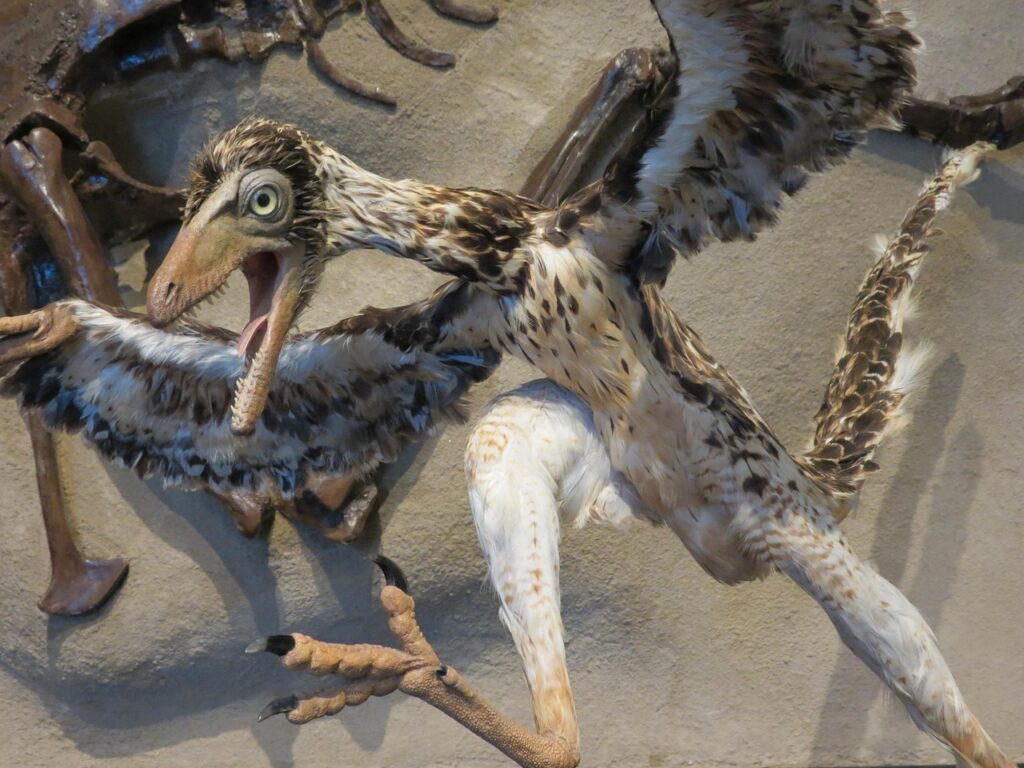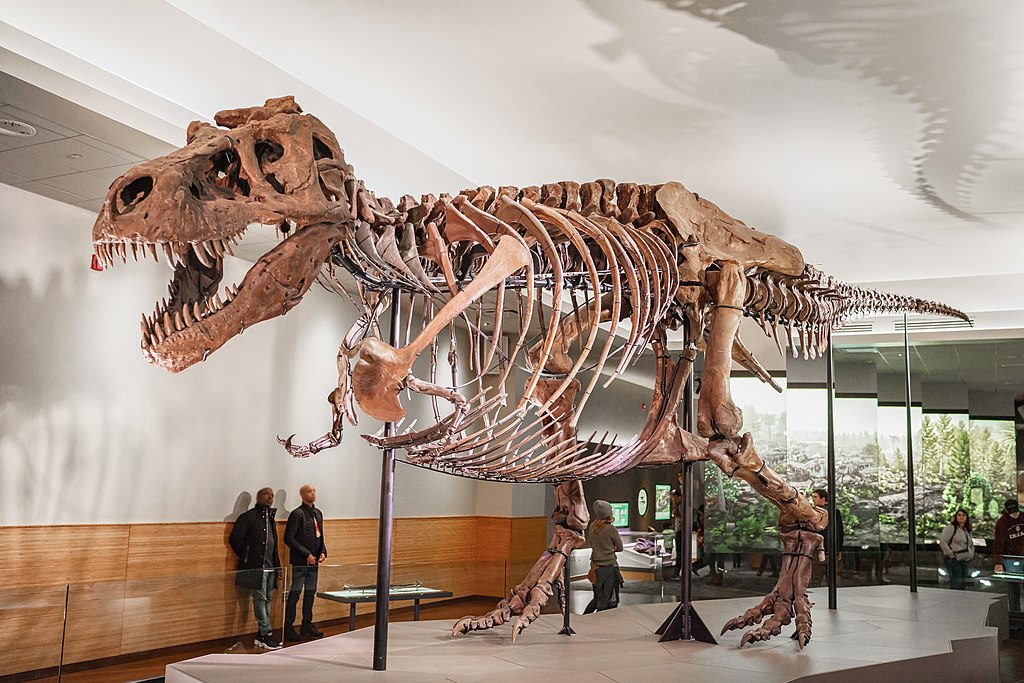In the annals of paleontological history, no dinosaur holds quite the same significance as Megalosaurus. This remarkable creature earned its place in scientific history not through size or ferocity, but by being the first dinosaur ever formally named and described in scientific literature. In 1824, when William Buckland published his findings about strange bones discovered in Oxfordshire, England, he unwittingly launched the public’s fascination with dinosaurs that continues unabated to this day. Megalosaurus opened the door to a prehistoric world humanity had never imagined, beginning nearly two centuries of discovery, debate, and wonder about the “terrible lizards” that once ruled our planet.
The Discovery That Changed Science Forever
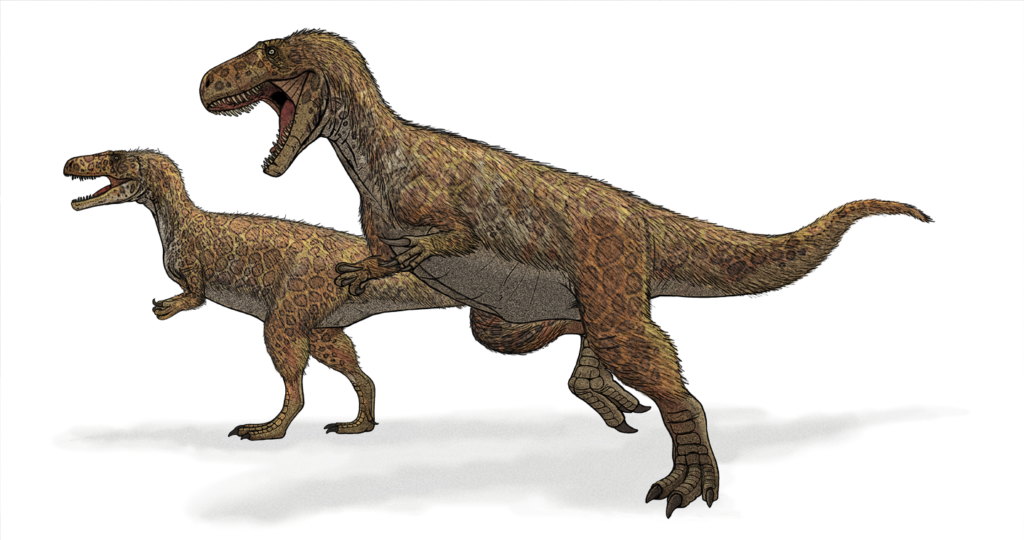
The story of Megalosaurus begins in the limestone quarries of Stonesfield, Oxfordshire, where unusual fossil fragments were unearthed in the early 1800s. The most significant specimen was a partial lower jawbone with teeth that belonged to no known living creature. Local collectors and natural historians recognized these remains as extraordinary, but it was Oxford University’s first Reader in Geology, Reverend William Buckland, who brought them to scientific prominence. In 1824, Buckland published his landmark paper in the Transactions of the Geological Society of London, formally describing and naming Megalosaurus bucklandi. This publication represented the first scientific description of what would later be recognized as a dinosaur, though the term “dinosaur” wouldn’t be coined until 1842 by Richard Owen. The significance of Buckland’s work cannot be overstated, as it marked the beginning of dinosaur paleontology as a scientific discipline.
What’s in a Name: The Etymology of Megalosaurus

The name Megalosaurus derives from Ancient Greek, combining “megalos,” meaning “great” or “big,” and “saur, os,” meaning “lizard,” thus translating to “great lizard.” This name reflects the early misconception that these creatures were essentially oversized reptiles similar to modern lizards. William Buckland chose this name to convey the impressive size of the animal based on the jaw fragments he had examined. The species name, “bucklandi,” was added later by Richard Owen in honor of Buckland himself. While the name may seem somewhat generic by modern standards, especially compared to the descriptively named dinosaurs discovered later, it reflected the best understanding of the time. In an era when the concept of extinct giant reptiles was revolutionary, “great lizard” aptly captured the wonder these bones inspired in early 19th-century scientists who were just beginning to glimpse Earth’s prehistoric past.
Early Interpretations and Misunderstandings

The initial scientific understanding of Megalosaurus was fraught with misconceptions that seem almost comical from our modern perspective. William Buckland and his contemporaries, working without the benefit of complete skeletons or evolutionary context, initially imagined Megalosaurus as an enormous, scaly quadruped—essentially a lizard of monstrous proportions. Some early artistic reconstructions even depicted it as a massive iguana-like creature. One of the most famous early illustrations appeared in the Crystal Palace Park in London in the 1850s, showing Megalosaurus as a heavy-set, four-legged beast. The creature was thought to be around 40 feet long, and some scientists even suggested it possessed a horn on its snout based on misidentified fossil fragments. These misinterpretations weren’t due to scientific incompetence but rather reflected the fragmentary nature of the evidence and the absence of a conceptual framework for understanding dinosaurs as a distinct group of animals with their unique characteristics.
Megalosaurus in the Victorian Imagination

Megalosaurus captured the Victorian public’s imagination in ways that extended far beyond scientific circles. Perhaps the most famous cultural reference appears in Charles Dickens’ novel “Bleak House” (1852-53), where he vividly describes London’s foggy streets: “As much mud in the streets as if the waters had but newly retired from the face of the earth, and it would not be wonderful to meet a Megalosaurus, forty feet long or so, waddling like an elephantine lizard up Holborn Hill.” This passage reveals how quickly dinosaurs had entered the public consciousness, becoming shorthand for the primordial and ancient. The Crystal Palace dinosaur models, which included Megalosaurus, became popular attractions that allowed ordinary citizens to visualize these prehistoric creatures. Newspaper articles, public lectures, and other forms of Victorian media regularly featured discussions of this “antediluvian monster,” reflecting a society grappling with deep time and evolutionary concepts that challenged traditional worldviews. Megalosaurus thus became not just a scientific discovery but a cultural touchstone in an era of rapidly changing understandings about Earth’s history.
The Modern Scientific Understanding
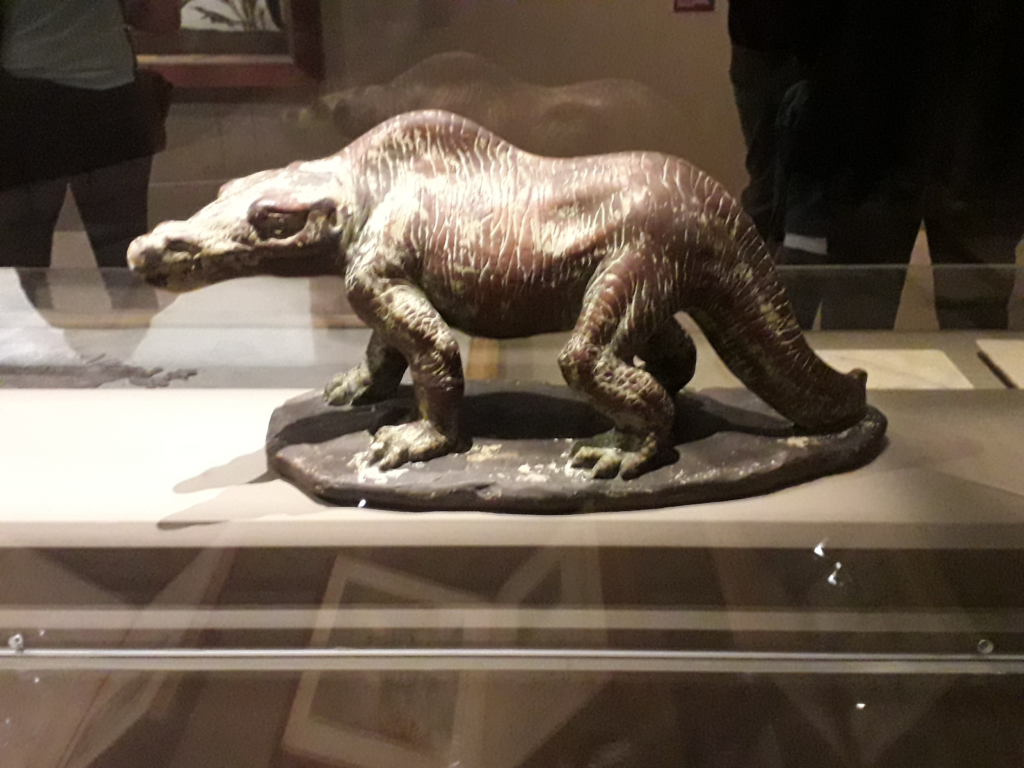
Contemporary paleontological understanding of Megalosaurus differs dramatically from early Victorian conceptions. Modern science recognizes Megalosaurus as a carnivorous theropod dinosaur that lived during the Middle Jurassic period, approximately 168 to 166 million years ago. Unlike the quadrupedal lizard of early reconstructions, we now know Megalosaurus walked on two powerful hind legs with a horizontal posture balanced by a long tail. It stood approximately 3 meters (9.8 feet) tall at the hip and measured roughly 9 meters (30 feet) in length, with a weight estimated at around 1 ton. Its skull featured powerful jaws lined with large, serrated teeth designed for slicing through flesh. Megalosaurus belonged to the group Tetanurae, making it a relative of later theropods like Allosaurus and even Tyrannosaurus. Despite these advances in understanding, Megalosaurus remains somewhat enigmatic compared to better-known dinosaurs, as relatively few complete specimens have been discovered, and much of our knowledge still comes from fragmentary remains supplemented by comparisons with better-preserved relatives.
The Fossil Record: What We Have
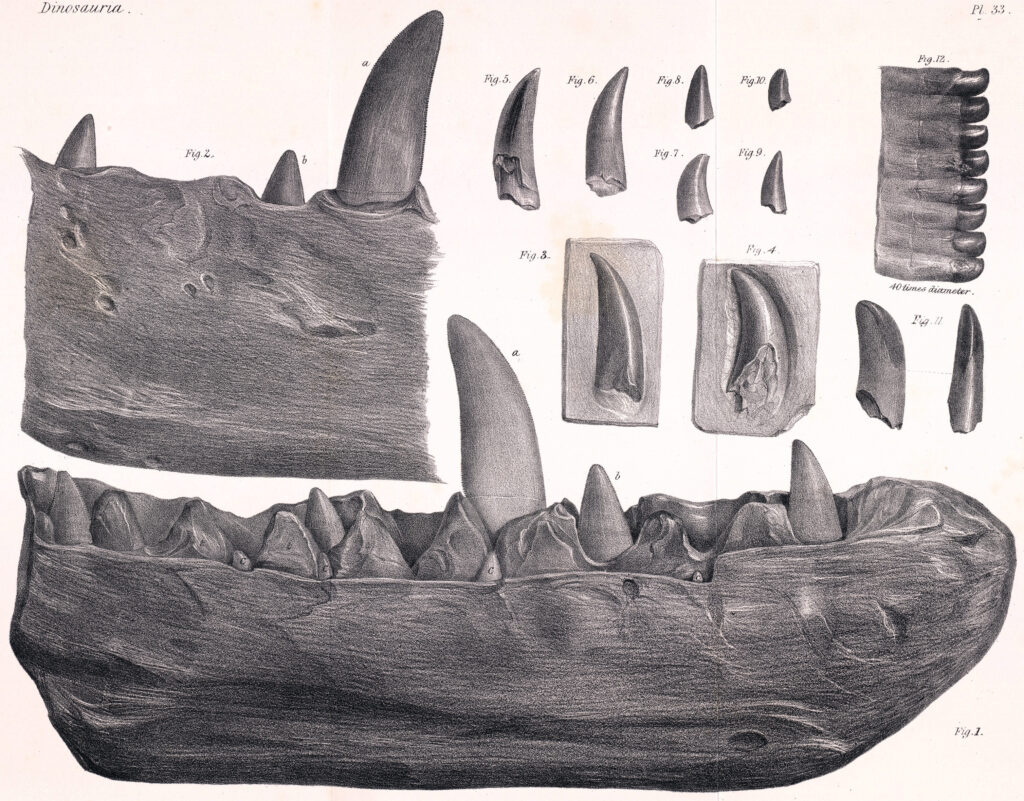
Despite its historical significance, the actual fossil record of Megalosaurus remains frustratingly incomplete. The holotype specimen—the original material used to define the species—consists primarily of a partial lower jaw with teeth, vertebrae, hip bones, and leg fragments. This fragmentary nature has made detailed reconstruction challenging and has led to numerous revisions in scientific understanding over time. Additional specimens discovered since Buckland’s day have been assigned to Megalosaurus, but many have subsequently been reclassified as belonging to other dinosaur species. The most significant verified Megalosaurus remains come from the Stonesfield Slate of Oxfordshire and the Taynton Limestone Formation. Unlike many famous dinosaurs, no complete skeleton of Megalosaurus has ever been found, leaving paleontologists to piece together its appearance and characteristics through comparative anatomy with related species. This limited fossil record explains why Megalosaurus, despite its historical primacy, is less visually familiar to the public than later discoveries like Tyrannosaurus or Triceratops, which are known from more complete remains.
Megalosaurus’ Place in the Dinosaur Family Tree

In modern taxonomic classification, Megalosaurus occupies a significant but somewhat contested position in the dinosaur family tree. It belongs to the clade Tetanurae within the larger group Theropoda—the primarily carnivorous, three-toed dinosaurs that eventually gave rise to birds. More specifically, Megalosaurus is considered the defining member of the family Megalosauridae, a group of medium to large-sized carnivorous dinosaurs that flourished in the Middle to Late Jurassic period. Phylogenetic studies suggest that megalosaurids represent an early branch of tetanuran evolution, making them important for understanding the development of later theropod groups. Megalosaurus shares anatomical features with both more primitive theropods and more advanced forms, occupying a transitional evolutionary position. The taxonomic history of Megalosaurus has been complicated by what paleontologists call the “wastebasket taxon” problem—for decades, numerous theropod fossils from various periods and locations were incorrectly assigned to the Megalosaurus genus before being reclassified. This taxonomic confusion is gradually being resolved through more rigorous comparative studies and cladistic analyses, giving us a clearer picture of Megalosaurus’ true evolutionary relationships.
Hunting and Feeding Behavior
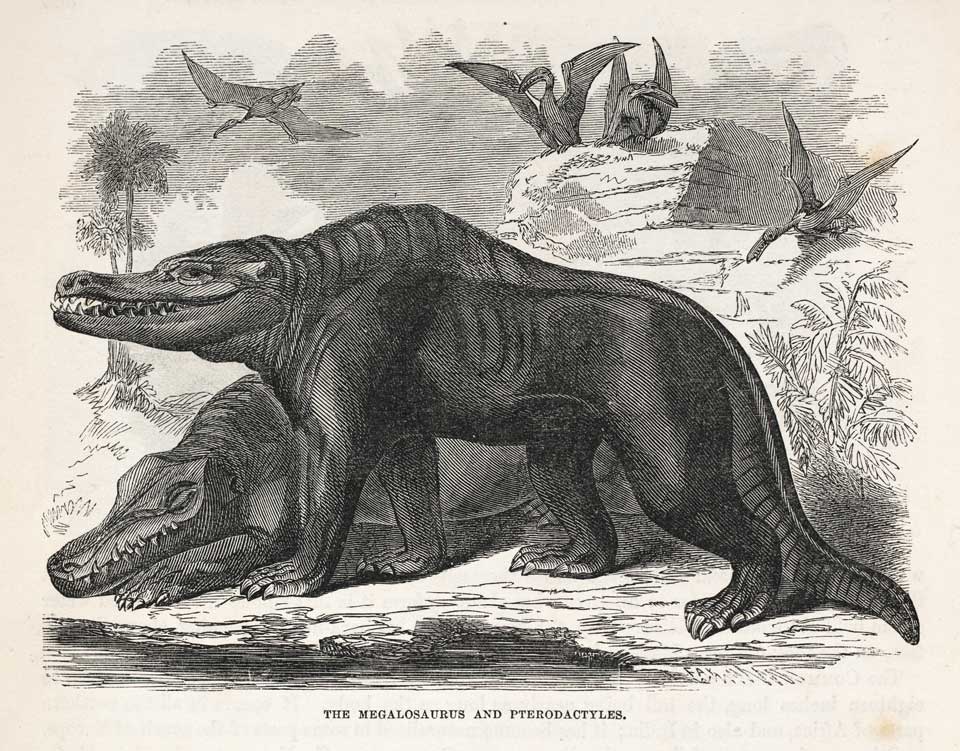
Analyzing the anatomy of Megalosaurus provides compelling insights into how this predator hunted and consumed its prey. The powerful jaws housed large, blade-like teeth with serrated edges—perfect for slicing through flesh rather than crushing bone. This dental arrangement suggests Megalosaurus was an active predator rather than primarily a scavenger. Its strong forelimbs, though shorter than its hind limbs, featured three-fingered hands with sharp claws that likely helped to grasp struggling prey. Biomechanical studies of its leg structure indicate Megalosaurus was reasonably fast and agile for its size, capable of pursuing prey across the Jurassic landscapes. The Middle Jurassic ecosystem where Megalosaurus lived included various potential prey animals, from small to medium-sized dinosaurs to large prehistoric crocodilians. As the apex predator in its environment, Megalosaurus likely employed an ambush hunting strategy similar to modern large carnivores, using vegetation cover to approach unsuspecting prey before launching a swift, powerful attack. Evidence from related theropods suggests these dinosaurs had keen senses, particularly vision, which would have made them formidable hunters in the ancient forests and floodplains of what is now Europe.
The World of Megalosaurus
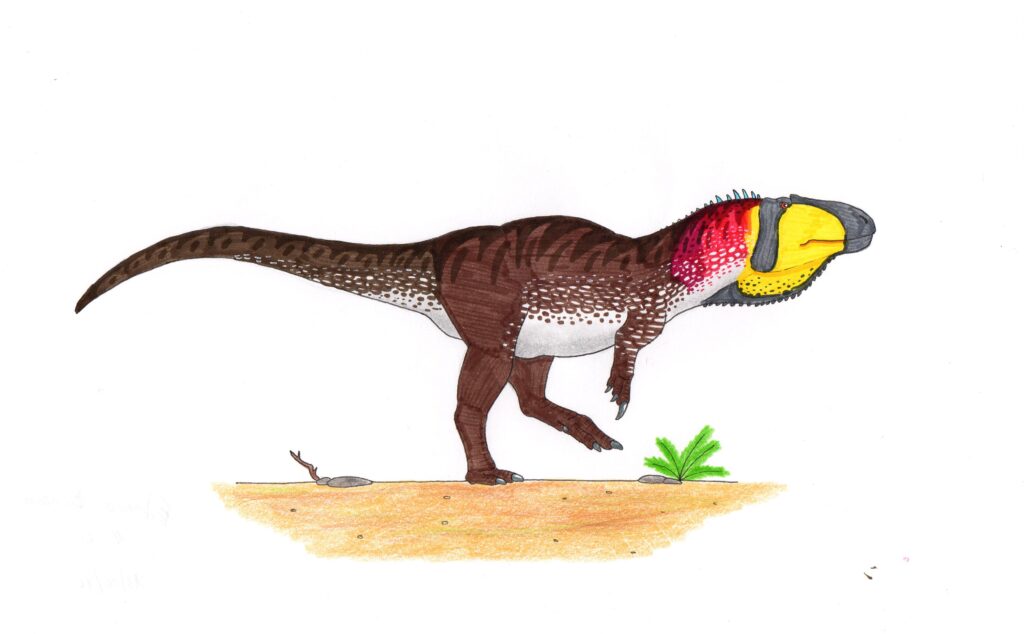
During the Middle Jurassic period, when Megalosaurus stalked its prey, the world looked dramatically different from today’s landscape. What would eventually become the British Isles existed as a series of islands in a warm, shallow sea, located much closer to the equator than its current position. This archipelago environment featured coastal lowlands, lagoons, and seasonal wetlands with a warm, humid climate. The flora consisted primarily of ferns, cycads, ginkgoes, and coniferous trees rather than flowering plants, which had not yet evolved. Megalosaurus shared this ecosystem with a diverse array of other dinosaurs, including the sauropod Cetiosaurus, the stegosaur Loricatosaurus, and smaller theropods. The waterways teemed with prehistoric crocodilians, fish, and marine reptiles. Primitive mammals, mostly small, shrew-like creatures, scurried in the underbrush, occasionally falling prey to the larger reptilian predators. Atmospheric carbon dioxide levels were higher than today, creating greenhouse conditions that eliminated polar ice caps and raised sea levels. This warm, lush environment provided abundant resources to support the food chain, topped by apex predators like Megalosaurus.
The Taxonomic Confusion: The “Wastebasket Taxon” Problem

For much of the 19th and early 20th centuries, Megalosaurus suffered from what paleontologists call the “wastebasket taxon” problem—a phenomenon where numerous fossils are assigned to a single genus due to superficial similarities or limited comparative material. As the first named dinosaur, Megalosaurus became the default classification for many large, carnivorous dinosaur remains discovered throughout Europe and beyond. This taxonomic confusion reached its peak during the “Bone Wars” era of competitive fossil hunting, when fragmentary theropod remains from various continents and periods were hastily labeled as Megalosaurus species. At one point, over 20 different “species” of Megalosaurus had been named. Modern paleontological review has steadily reduced this number, with most former Megalosaurus species now recognized as distinct genera or reassigned to other established dinosaur groups. The genuine Megalosaurus bucklandi is now restricted primarily to fossils from the Middle Jurassic of England. This taxonomic refinement, while scientifically necessary, had the side effect of diminishing Megalosaurus’ prominence in popular culture, as more completely known dinosaurs with clearer identities captured public attention.
Megalosaurus in Modern Popular Culture

Despite its foundational importance in dinosaur science, Megalosaurus has maintained a relatively modest profile in modern popular culture compared to later discoveries like Tyrannosaurus or Velociraptor. This relative obscurity can be attributed to several factors, including the incomplete nature of its fossil record and the lack of distinctive features that capture the public imagination. Nevertheless, Megalosaurus retains its place in various media as the “first dinosaur.” It appears in documentary series about prehistoric life, often highlighted for its historical significance rather than its physical characteristics. The BBC’s “Walking with Dinosaurs” featured Megalosaurus, introducing it to a new generation of dinosaur enthusiasts. In literature aimed at children, Megalosaurus is frequently included in comprehensive dinosaur encyclopedias, usually with emphasis on its place in scientific history. Various museums worldwide display Megalosaurus reconstructions, with the Oxford University Museum of Natural History, where some of the original specimens reside, giving it particular prominence. Though overshadowed by more dramatically named and better-understood dinosaurs in movies and merchandise, Megalosaurus remains the patriarch of all dinosaur discoveries, the creature that first revealed a world of prehistoric giants to an astonished human audience.
The Legacy of Megalosaurus in Science
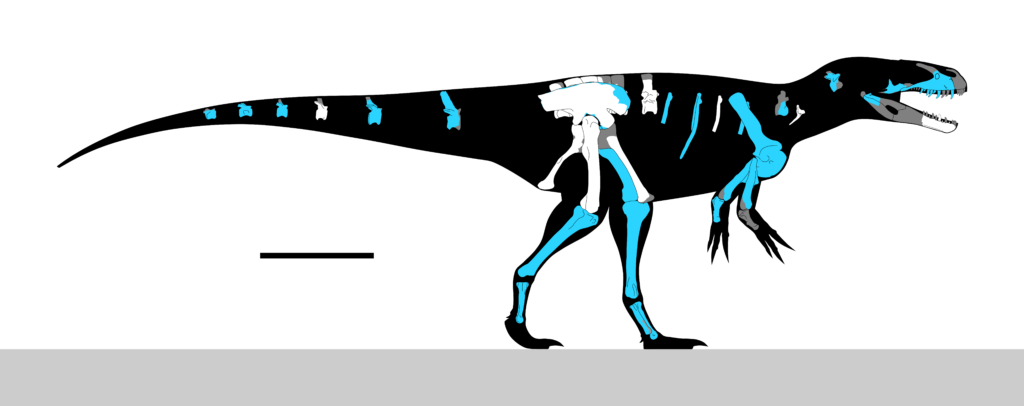
The scientific legacy of Megalosaurus extends far beyond the specific understanding of this single species. Its discovery and naming initiated the field of dinosaur paleontology, fundamentally altering humanity’s perception of Earth’s history. The study of Megalosaurus contributed to the development of comparative anatomy as researchers sought to understand how these ancient creatures related to modern animals. The ongoing refinement of Megalosaurus classification has helped establish more rigorous taxonomic methodologies in paleontology generally. The initial misunderstandings about Megalosaurus’ appearance and biology serve as an important case study in how scientific knowledge evolves with new evidence and theoretical frameworks. Perhaps most significantly, Megalosaurus played a crucial role in the intellectual revolution of the 19th century, as the reality of extinction and vast geological time became irrefutable. This conceptual shift helped prepare the intellectual ground for Darwin’s theory of evolution, published just decades after Megalosaurus was named. Today, the original Megalosaurus specimens remain treasured scientific artifacts, not only for what they tell us about Jurassic predators but also for their role in the development of modern scientific thought about life’s history on Earth.
Continuing Research and New Discoveries
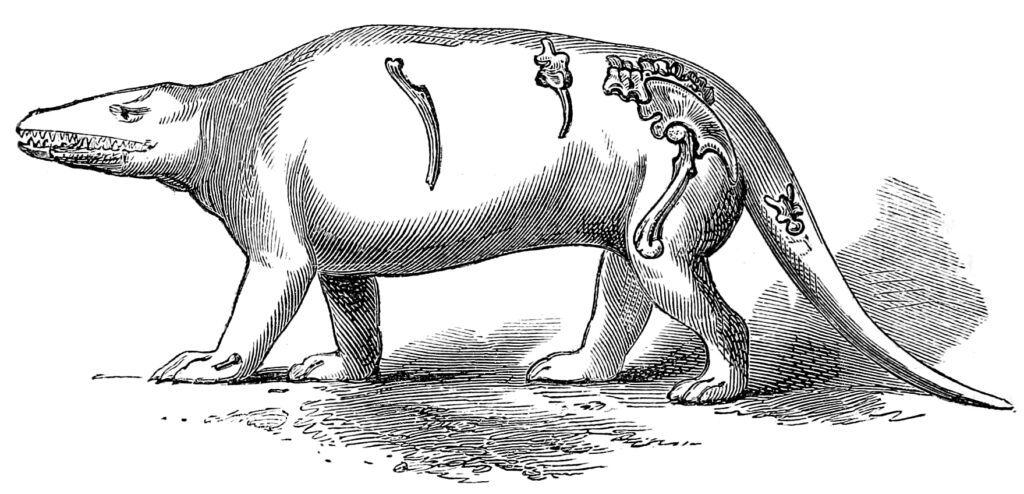
Research on Megalosaurus continues to evolve as new analytical techniques and comparative specimens become available. Recent studies using scanning electron microscopy have revealed microscopic details of tooth structure and wear patterns, providing new insights into the feeding behavior of this Jurassic predator. Advanced imaging technologies now allow paleontologists to examine internal structures of fossil bones without damaging them, revealing growth patterns and potential pathologies. Biomechanical modeling using computer simulations has helped scientists better understand how Megalosaurus moved and hunted. Occasional discoveries of fossil material potentially attributable to Megalosaurus continue to refine our understanding, though truly significant new specimens remain elusive. Broader studies of related megalosaurids from other locations help fill in gaps in our knowledge through comparative analysis. The application of phylogenomic approaches—attempting to extract and analyze ancient DNA and proteins—remains challenging for Jurassic specimens but represents a frontier that may eventually yield new information. Nearly two centuries after its initial description, Megalosaurus continues to be studied using cutting-edge scientific techniques that William Buckland could never have imagined, demonstrating the enduring scientific value of this pioneering dinosaur discovery.
Megalosaurus and the Origins of Dinosaur Discovery
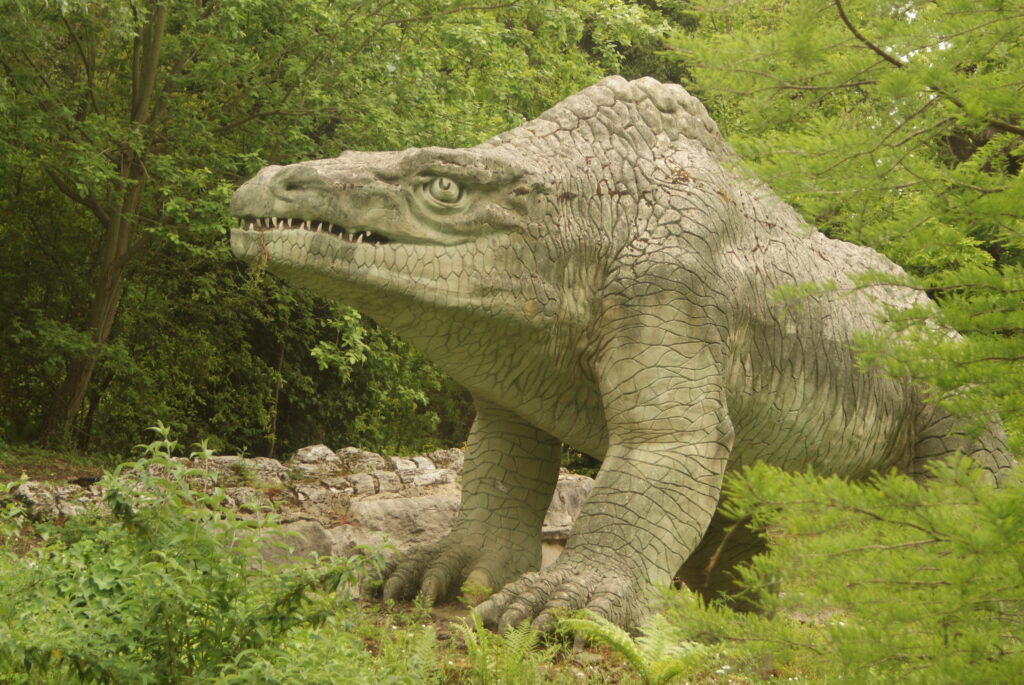
From its humble beginnings as a curious jawbone in an Oxford quarry to its status as the foundation of dinosaur paleontology, Megalosaurus has journeyed through scientific history as remarkably as it once moved through Jurassic landscapes. While we may never know this creature with the same detail as more recently discovered dinosaurs, its significance transcends the limitations of its fossil record. As the first named dinosaur, Megalosaurus opened the door to a lost world that continues to captivate scientists and the public alike. The story of Megalosaurus reminds us that scientific understanding is a progressive journey—one that began with a single name given to a mysterious set of ancient bones, launching humanity’s enduring fascination with the magnificent creatures that ruled Earth long before our time.


